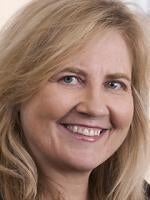“Let's be clear: if all of these claims, including the system claims, are not patent-eligible, this case is the death of hundreds of thousands of patents, including all business method, financial system, and software patents as well as many computer implemented and telecommunications patents.” This was said by Justice Kimberly Moore, U.S. Court of Appeals for the Federal Circuit, after the decision was delivered in Alice Corporation Pty. Ltd. v. CLS Bank International, et al., 134 S.Ct. 2347 (June 19, 2014).
Background on Alice
Alice, a groundbreaking case heard by the U.S. Supreme Court in 2014, is now responsible for determining the confines of patentable subject matter. The patents at issue in Alice were directed to a computerized method configured to perform electronic escrow services for online transactions. The Court was responsible for determining whether the four patents owned by Alice Corporation Pty. Ltd. were entitled to patent protection or in the alternative were abstract ideas and therefore not entitled to patent protection under Title 35 of the United States Code. The Court found the patents were directed to an abstract idea and therefore invalid because implementing those claims on a computer was insufficient to transform the idea to a patentable invention. The Court further explained that if a patent’s recitation of a computer amounts to a mere instruction to implement an abstract idea on a computer, then that addition cannot impart patent eligibility.
Effects of Alice
Since the federal court and U.S. Supreme Court rulings were delivered in Alice, issued patents have started to become invalidated under the new 35 USC §101 standard. Specifically, patents related to software and business methods are being labeled as “abstract ideas” and therefore constitute patent-ineligible subject matter under Alice. For example, in Planet Bingo, LLC v. VKGS LLC, No. 13-1663 (Fed. Cir. 2014),the Federal Circuit rejected a patent that claimed the concept of running a bingo game on a computer. The court held that “managing the game of bingo consists solely of mental steps which can be carried out by a human using pen and paper and converting that process into a computer program does not lead to a patentable invention.”
Furthermore, in CMG Financial Services, Inc. v. Pacific Trust Bank, F.S.B., 2014 WL 4922349 (C.D. Cal.), the Central District Court of California struck down a patent on a method of linking a mortgage line of credit to a checking account. The court said that the generic computer functions mentioned in the patent were not enough to merit protection. Finally, in Tuxis Technologies, LLC v. Amazon.com, Inc, No. 1:2013cv01771 - Document 31 (D. Del. 2015), a Delaware District Court invalidated a patent on the concept of using a computerized system to “upsell” customers who buy one product into buying other products that might interest them. The District Court pointed out that upselling is as old as commerce itself.
The recent decisions handed down that rely on Alice leave inventors and patent owners asking how do we avoid the uncertainties of Alice and will the adoption of Alice by the U.S. Patent and Trademark Office (USPTO) result in a decline in patent applications filed. As these are all credible concerns, the USPTO has issued guidelines on subject-matter eligibility for the purpose of educating present and future inventors and patent owners on how to avoid an Alice rejection and filing a patent application that lacks patentable subject matter.
How to Survive Alice in the Future
The USPTO’s recently released “2014 Interim Guidance on Patent Subject Matter Eligibility” provides a basis for USPTO Examiners to use when determining subject-matter eligibility under 35 U.S.C. 101 in view of recent Supreme Court decisions, including Alice. The Guidance explains in detail the subject-matter eligibility analysis for all claims (machine, composition of matter, manufacture and process claims). The analysis is used by Examiners for evaluating whether a claim is drawn to patent-eligible subject matter under 35 U.S.C. 101.
There are two steps in the analysis. Step 1 is to determine whether the claim is to a process, machine, manufacture or composition of matter. If it is not, then the claim is not eligible subject matter under 35 U.S.C. 101. If it is a process, machine, manufacture or composition of matter, then step 2a asks if the claim is directed to a law of nature, a natural phenomenon or an abstract idea. These are judicially recognized exceptions that fall outside the scope of patent-eligible subject matter. If the claim is directed to a judicially recognized exception, the Examiner will then analyze whether the claim recites additional elements that amount to significantly more than the judicial exception (step 2b). If yes, then the claim qualifies as eligible subject matter under 35 U.S.C. 101.
After these guidelines were released, practitioners and the courts were forced into interpreting and understanding the ambiguous terms and the steps. For example, the guidelines did not provide clarity on what is an abstract idea and what the USPTO meant by “significantly more.” Since Alice, a number of computer-related patents were challenged and invalidated by the Federal Circuit and District Courts. In addition, there is an increase in the number of computer-related patent applications that did not survive the prosecution process as a result of Alice.
A study performed by Robert Sachs in January 2015 found that there were no patents issued since Alice that overcame a post-Alice 35 U.S.C. 101 rejection. Significantly, 1,463 applications were abandoned since Alice. This sample size, even though small, offers evidence that it is becoming more difficult or nearly impossible to obtain a patent after receiving an Alice rejection. Examiners are waiting for further clarity to better understand the type of subject matter that falls under 35 U.S.C. 101. In his study, Sachs found that 17 percent of Examiners have not allowed a single application since Alice. However, recent case law provides insight into possible strategies for getting a patent application and/or a patent to survive Alice during prosecution and post-grant proceedings.
In December 2014, the Federal Circuit found that claims in a patent application disclosing a computer-related invention can be patentable if the invention makes an improvement to a computer system or fixes a problem arising from a computer system. If the patent broadly claims use of the Internet or a computer to perform an abstract business practice (“with insignificant added activity”), then the patent application will be rejected under Alice. The judge in DDR Holdings, LLC v. Hotels.com, L.P., et al., 773 F.3d 1245 (Fed. Cir. 2014), ultimately found that the claimed improvement to the Internet met the “significantly more” standard cited in Alice. The judge concluded that the claims in the US 7,818,399 patent (an e-commerce system in which a composite web page is created to keep a user on a given host web page without being referred to a third-party affiliate) are patentable because they are “necessarily rooted in computer technology in order to overcome a problem specifically arising in the realm of computer networks.”
Furthermore, a patent or patent application may survive an Alice rejection by disclosing the corresponding algorithm for a claimed function in the computer-related patent or application. An inventor must provide a detailed specification that comprises an algorithm that illustrates how the software performs the claimed functions. An algorithm will explain the functionality of the software in technical terms to an Examiner, which may rebut an Examiner’s rejection that the patent/patent application covers nothing more than an abstract idea. In Eon Corp. IP Holdings LLC, v. AT&T Mobility LLC, No. 14-1392 (Fed. Cir. 2015), the Federal Circuit affirmed that an interactive TV patent owned and enforced by Eon Corp. IP Holdings LLC is invalid as indefinite because the specification failed to disclose an algorithm to provide structure for various computer-implemented elements. The Federal Circuit upheld a Delaware judge’s decision that software patents with a means-plus-function claim are frequently found to be indefinite unless an algorithm is included in the application.
In general, computer-related patents are difficult to obtain. The Alice decision has further complicated the process for inventors and practitioners. However, the aforementioned decisions have shed light on how a computer-related patent can avoid or overcome an Alice rejection. Ultimately, inventors may be able to overcome an Alice rejection by claiming an improvement to a computer system or disclosing an algorithm for a claimed function in the patent application. As more computer-related patents are litigated, inventors and practitioners alike are hoping that the courts will provide greater transparency in overcoming Alice.



 />i
/>i

